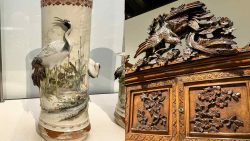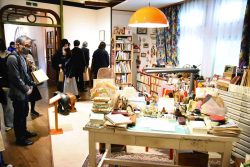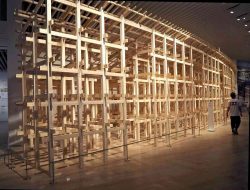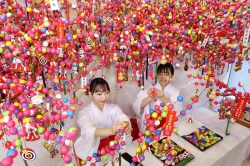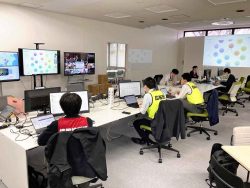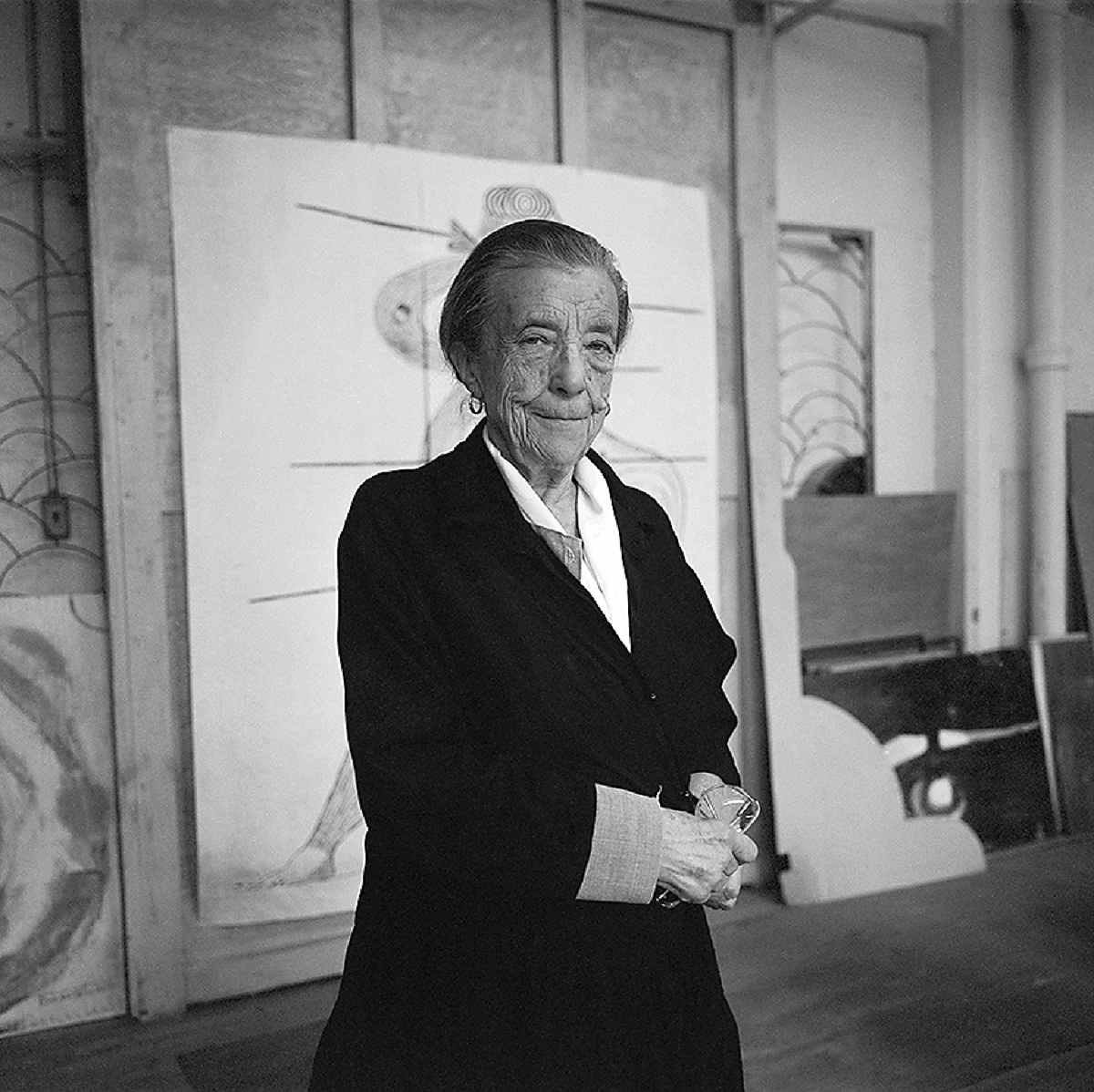
Louise Bourgeois in her studio in front of her print Sainte Sebastienne (1992) in Brooklyn
17:14 JST, October 21, 2024
For the first time in 27 years, a collection of world-renowned artist Louise Bourgeois’s works can now be viewed in Japan at a new exhibition at the Mori Art Museum in Minato Ward, Tokyo.
Bourgeois (1911-2010) transformed the trauma she suffered during her youth and used those memories and experiences to create art. Over her 70-year career, Bourgeois explored opposing concepts, such as male and female, and concrete and abstract ideas, through her sculptures, paintings, installations and other types of art.
Even if her name is unfamiliar, people in Tokyo might have seen one of her pieces at some point. One of Bourgeois’s more notable works, “Maman,” is a massive bronze spider that has been standing in the middle of Roppongi Hills since 2003 and is one of seven such spiders displayed around the world.
More than 100 of Bourgeois’s works are displayed in the new exhibition “Louise Bourgeois: I have been to hell and back. And let me tell you, it was wonderful.” The exhibit is divided into three chapters, each of which is based on her complicated relationship with her family.
Chapter 1, “Do Not Abandon Me,” focuses on the idea of motherhood as well as her relationship with her own mother. Bourgeois had a deep-seated fear of abandonment and was profoundly affected by the loss of her mother, who died from an illness when Bourgeois was 20.
Spiders, a common motif in Bourgeois’s works, are considered to be self-portraits. However, they are also said to represent her mother, who worked in the family’s tapestry repair business. Spiders expressed the complicated feelings she held for her mother as they are threatening, but at the same time, they can repair any damage to their webs with thread.
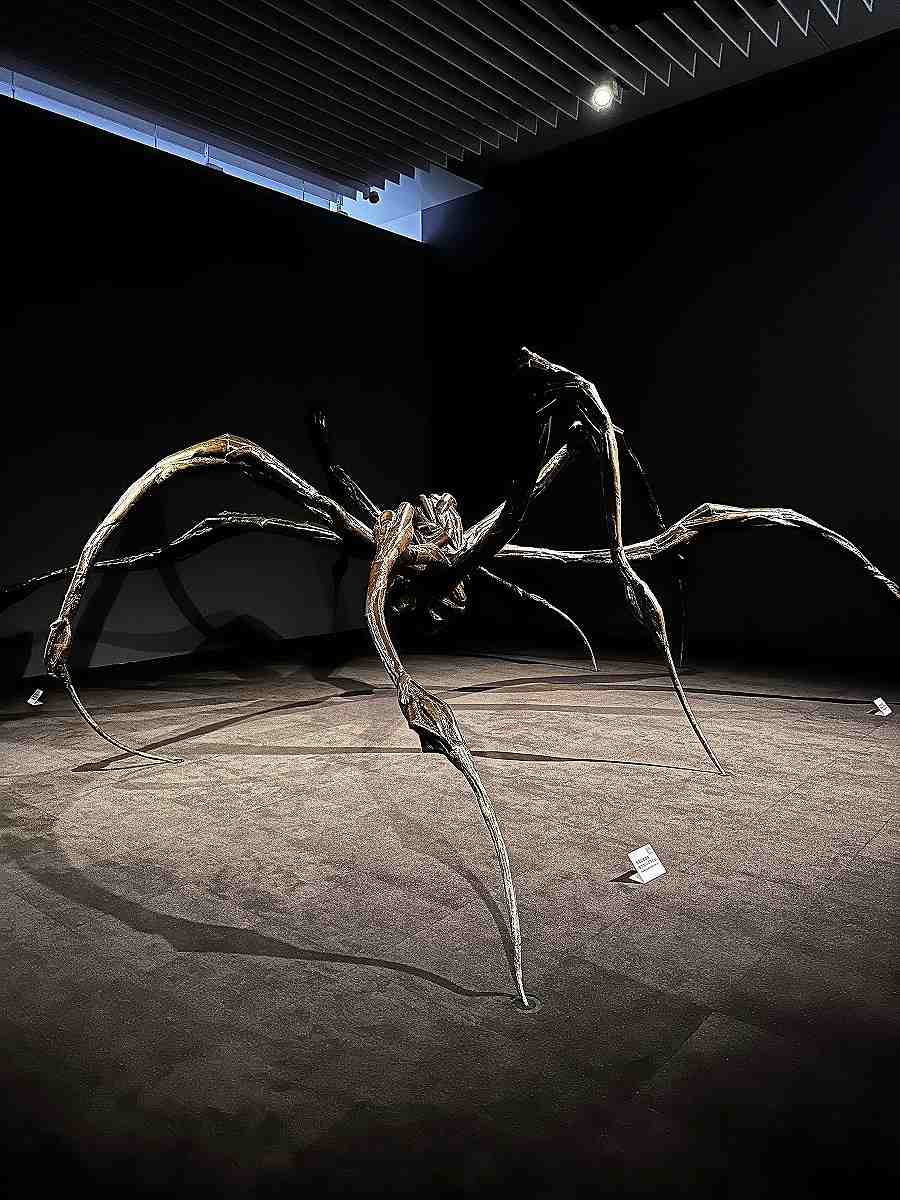
“Crouching Spider” at the Mori Art Museum in Minato Ward, Tokyo
“One piece, called ‘Crouching Spider,’ is particularly impactful,” said Mori Art Museum Curator Reiko Tsubaki on Sept. 24. “As a predator, it attacks to feed her children. Spiders, which have that type of strength, are expressed [in Bourgeois’s pieces].”
The sculpture, which is nearly the size of a large room, appeared as if it might pounce at any moment. It was particularly impressive that such a giant piece, which appears to have a lot of weight, could be supported on such thin legs that ended in small points.
The second chapter, “I Have Been to Hell and Back,” features pieces that expressed the feelings she had for her father, as well as such feelings as guilt, jealousy, anxiety and suicidal impulses.
After her father died in 1951, Bourgeois underwent psychoanalysis for more than 10 years, during which she did not produce many pieces, Tsubaki said. During those years, Bourgeois reflected on her relationship with her father, such as her feeling of betrayal after learning about his affair.
The final chapter, “Repairs in the Sky,” features pieces that express Bourgeois’s want to free herself and repair her relationships with her family and those close to her.
Bourgeois incorporated pieces of clothing that belonged to her family or other sentimental pieces of fabric into her works. The act of sewing pieces together was her way of trying to overcome her fears, and at the same time, connect with her mother.
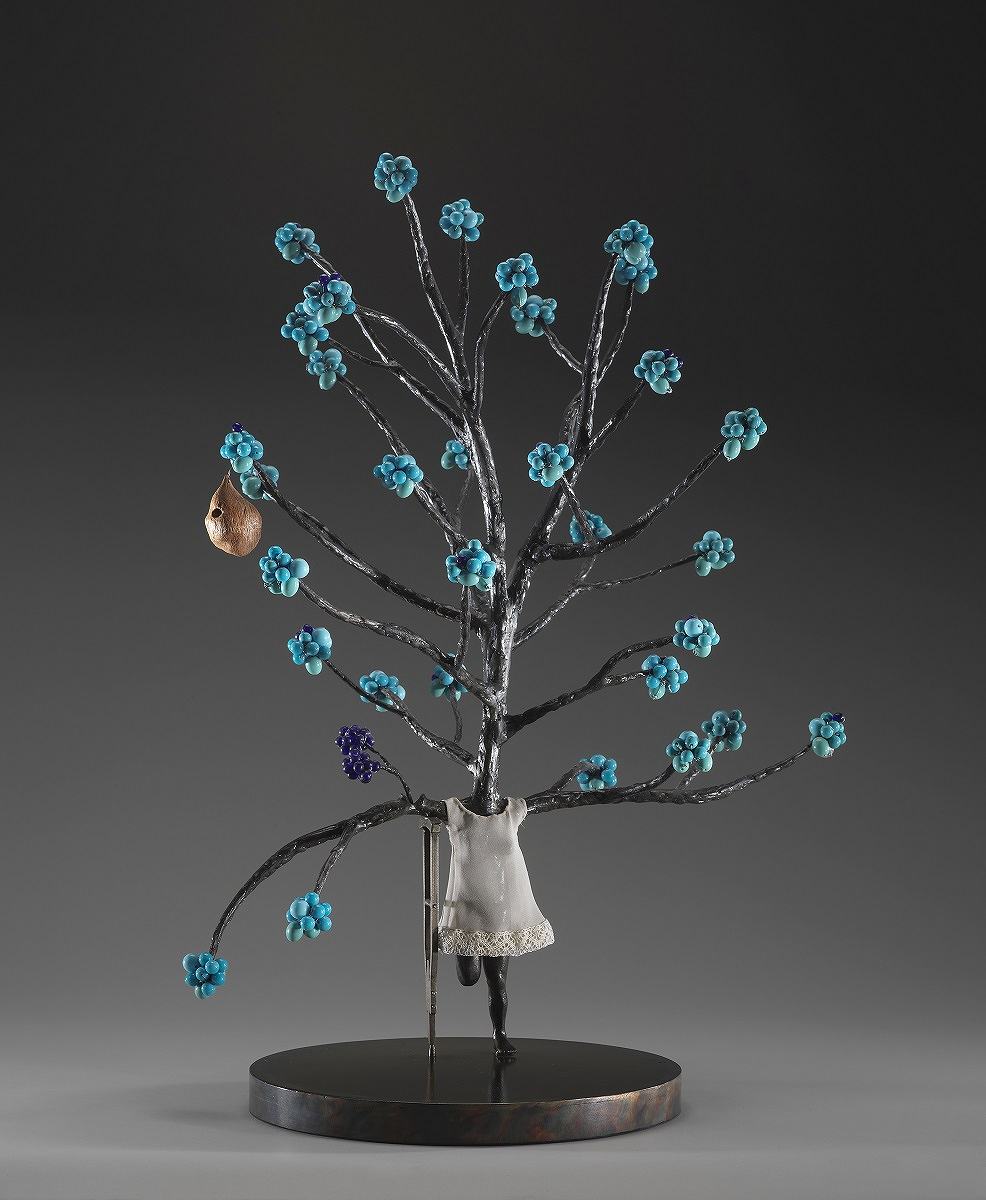
“Topiary IV”
“Topiary IV” is a one-legged human-shaped sculpture, which has branches and fruits growing from where arms and a head would be.
The blue fruits and the sheer white dress catch the eye in contrast with the dark figure.
On the shoulder, black fruits appear to grow out of a cut, hinting at the negative feelings she still harbored.
“It seems that Bourgeois never believed that she could fully free herself from her pain or her past trauma,” Mori Art Museum Associate Curator Manabu Yahagi said on the day. “Nevertheless, she repeatedly faced her anxieties, fears and other such emotions … and continued to elevate her art by using her emotions and memories until she died at age 98.”
The exhibit is scheduled to continue through Jan. 19, 2025.
"Culture" POPULAR ARTICLE
-
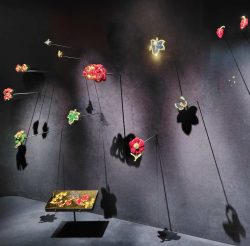
Van Cleef & Arpels Dazzles with Art Deco Artisanry at Tokyo Exhibit
-

Disney’s ‘Twisted-Wonderland’ Animated Series Puts Villains in Spotlight: New Show Features School Inspired by Classic Disney Films
-

Japan Plans to Distribute Manga Overseas Via New Platform
-

Japanese Craftsman Produces Beautiful and Durable Bags Made of Wood
-

Ayumi Hamasaki’s Shanghai Concert Canceled Day Before Schedule as Part of Beijing Backlash
JN ACCESS RANKING
-

Keidanren Chairman Yoshinobu Tsutsui Visits Kashiwazaki-Kariwa Nuclear Power Plant; Inspects New Emergency Safety System
-

Imports of Rare Earths from China Facing Delays, May Be Caused by Deterioration of Japan-China Relations
-

University of Tokyo Professor Discusses Japanese Economic Security in Interview Ahead of Forum
-

Japan Pulls out of Vietnam Nuclear Project, Complicating Hanoi’s Power Plans
-

Govt Aims to Expand NISA Program Lineup, Abolish Age Restriction


